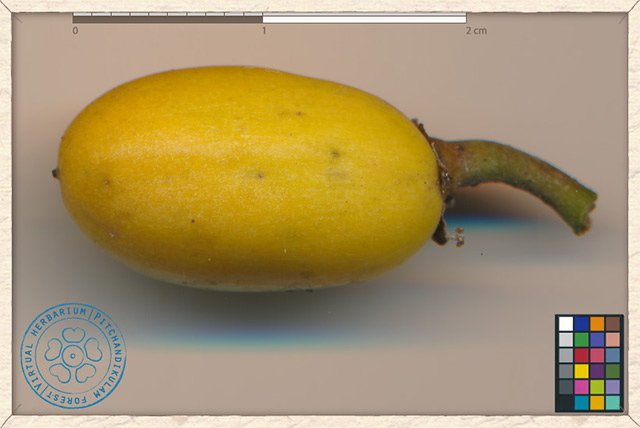Fruit of Ceylon ironwood found to have potent antioxidant properties
05/13/2019 / By Evangelyn Rodriguez

The fruit of the evergreen tree Manilkara hexandra Dubard (commonly known as Ceylon ironwood) is not well-studied so researchers from India decided to analyze its chemical components for potential health benefits. The fruit proved to be a good source of flavonoids and phenolic compounds which have antioxidant activity, as shown in their study published in the journal Food Science and Human Wellness.
- The researchers extracted phenolic compounds and flavonoids from the pulp and seeds of the ceylon ironwood fruit using methanol as extraction solvent.
- Phenolic content was measured using Folin-Ciocalteu reagent which is often used for colorimetric assays of phenolic antioxidants; flavonoid content was determined based on absorbance readings.
- LC-MS/MS (liquid chromatography-mass spectrometry) was used to confirm and quantify the major compounds found in the pulp (gallic acid, quercetin, and kaempferol) and seeds (gallic acid, quercetin, and vanillic acid).
- Gallic acid was found to be the predominant phenolic compound in the fruit, followed by catechol, ferulic acid, vanillic acid and coumaric acid.
- The most abundant flavonoid in the fruit was kaempferol, followed by quercetin, epigallocatechin and catechin.
- Gallic acid reportedly has anticancer activities while quercetin and catechins are powerful antioxidants that scavenge free radicals and protect against lipid degradation.
- Upon comparing the phenolic and flavonoid content of the fruit pulp and the seeds, the researchers identified the pulp as a better source of antioxidants.
Based on their results, the authors concluded that the fruit of the tree M. hexandra D., which is native to South Asia, is a good source of antioxidants and that regular consumption of the rayan fruit will be beneficial to a person’s health.
Get to know more amazing fruits and why they are good for your health by visiting Fruits.news.
Journal Reference:
Parikh B, Patel V. QUANTIFICATION OF PHENOLIC COMPOUNDS AND ANTIOXIDANT CAPACITY OF AN UNDERUTILIZED INDIAN FRUIT: RAYAN [MANILKARA HEXANDRA (ROXB.) DUBARD]. Food Science and Human Wellness. March 2017;6(1):10–19. DOI: 10.1016/j.fshw.2016.11.002
Submit a correction >>
Tagged Under:
alternative medicine, antioxidant fruit, antioxidants, Ceylon ironwood, clean food, flavonoids, food cures, food is medicine, food science, Free radicals, functional food, Gallic acid, kaempferol, Manilkara hexandra Dubard, natural medicine, phenolic compounds, quercetin, research
This article may contain statements that reflect the opinion of the author





















